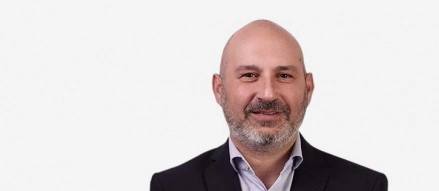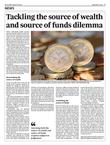
Tackling the source of wealth and source of funds dilemma
The principal objective and ultimate scope when reviewing the source of wealth and the source of funds is to obtain reasonable assurance that the customer’s wealth and/or proceeds from a transaction are not derived from criminal activity. This process is dependent on various factors, including the customer risk assessment, the nature and purpose of the business relationship, and the nature and size of the transaction.
Whilst due diligence on the source of wealth is undertaken at the start of the business relationship, due diligence on the source of funds may depending on the circumstances, take place throughout the business relationship.
Determining the source of wealth
Source of wealth refers to the overall wealth of the customer. However, although the regulatory requirement puts the onus on the customer and not the beneficial owner, whenever the customer is a start-up legal entity, subject persons would be advised to extend their review to the beneficial owner/s as well.
The source of wealth of a customer who is an individual relates to the person’s overall wealth. Identification of the source of wealth falls short of obtaining a statement of affairs of the customer. Subject persons are expected, on a risk basis, to obtain an understanding of this. Information may be obtained through the identification of the customer’s employment history, business involvements, investments, and inheritance, just to mention a few. Depending on the customer risk assessment and on the nature of the business relationship, subject persons may seek to request further information and take measures to verify the source of wealth. Such measures may include obtaining copies of tax returns/statements, copies of payslips, the verification of ownership of corporate investments, and proof of dividends received.
The source of wealth for a corporate customer may typically be verified from the financial statements of the entity. Once again, depending on the customer risk assessment, and the nature and purpose of the business relationship, further information may be requested to substantiate the source of wealth. This could include asking for further information on significant related parties and/or shareholder advances. In order to verify the historical operating profits of the entity, financial statements relating to prior years may be requested.
With Malta being an international financial services centre, due consideration of the jurisdiction risk relating to the source of wealth of a prospective customer should be undertaken. Furthermore, subject persons should be cognisant that the assessment of the source of wealth may necessitate the reassessment of the customer risk profile, including its compatibility with the subject person’s customer acceptance policy.
Evaluating the source of funds
Source of funds refers to the transactions carried out by the customer in the course of the business relationship. Once again, subject persons are expected to have appropriate systems in place to monitor, on a risk basis, the activity of their customers. The source of funds refers to the origin of the monies in a transaction that typically takes place between the subject person and the customer. Therefore, subject persons are expected to understand where the monies related to specific transactions were derived from, in order to ensure that these do not relate to proceeds from criminal activity. The subject person would, amongst others, need to take into consideration the medium through which the funds were transferred (for example bank transfers, cash payments, debt assignments, or crypto assets), the remitter or beneficiary, as well as the jurisdictional risk from where the monies were received, together with the economic basis of the transaction. In certain instances, and on a risk basis, subject persons may consider requesting further information from the customer with regard to the origin of the funds, including where this concern-related party/shareholder advances.
Assessing both the source of wealth and source of funds requires subjective judgment by the subject person. It is therefore important that the subject person’s policies and procedures provide sufficient detail and clarity on this matter. Appropriate training of front-line staff members is also essential to ensure that the right calls are made. At the end of the day, the verification of the source of wealth and source of funds should not be carried out in a rules-based context. The parameters should be risk-based and focused on the underlying ultimate objective of obtaining reasonable assurance that the funds used in a business relationship do not derive from the proceeds of criminal activity
Article written by Alan Craig, advisory partner, specialising in internal audit, governance, AML, and regulatory compliance.
This article first appeared in the Sunday Times of Malta on 22/02/2021 and it is available in the download section below.
Want to know more?





